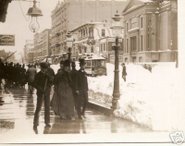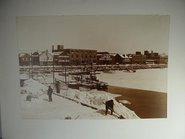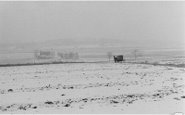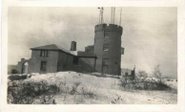Winter '18 / '19 - Sudden Stratospheric Warming: Watch #1 - UPDATE
Game On!
Major sudden stratospheric warming (SSW) in the cards and being dealt.
Figure 1: 10 hPa temperature change in a week in the Northern Hemisphere
Contour interval: 5 °C.PINK and light BLUE shadings indicate warming and cooling, respectively.
RED shading denotes warming for values higher than 25 °C.
Image courtesy: Tokyo Climate Center, Climate Prediction Division
Action center over Hudson Bay and much of Canada.
"A major midwinter SSW event occurs when polar stratospheric temperatures increase by at least 25 K in one week, and the zonal-mean zonal wind at or near 10 hPa (~30km altitude) reverses direction and becomes easterly north of 60° N."
REF: NASA Global Modeling and Assimilation Office
---
NWP models continue projections for major SSW through month/s end.

Figure 2: D+10 Latitude x height cross-section from EC prog
MAIN FEATURES:
- Stratospheric anticyclone progged to descend near the 20 mb level
Upper right corner - wind into the board ==> anticyclonic circulation
- Deep surface anticyclone at or above 500 mb
Lower right corner - wind into the board ==> anticyclonic circulation (Arctic surface HIGH)
Image courtesy Wetterdaten des Meteorologischen Instituts, Standort Berlin-Dahlem
IMPACT:
"Pronounced weakening of the NH wintertime stratospheric polar vortex tend to be followed by episodes of anomalously low surface air temperatures and increased frequency of occurrence of extreme cold events throughout densely populated regions such as eastern North America, northern Europe, and eastern Asia that persist for ~2 months."
REF: Thompson et al. (2002)
---
Also note QBO-W depiction at 30 mb over the equator.
QBO flipped from East (negative) to West (positive) in NOV.
Not necessary a good thing.
QBO-W associated with ...
- pressure differences over the North Atlantic tend to be greater, which strengthens the jet stream which increases chances of mild and stormy winter weather.
- geopotential height at high latitudes is significantly lower
- In years with low solar activity the polar winter vortex tends to be ... deeper and undisturbed ==> +AO ==> inhibits spillage of Arctic air into mid-latitudes.
- -PNA
- warmer SE states
- +NAO
























No comments:
Post a Comment